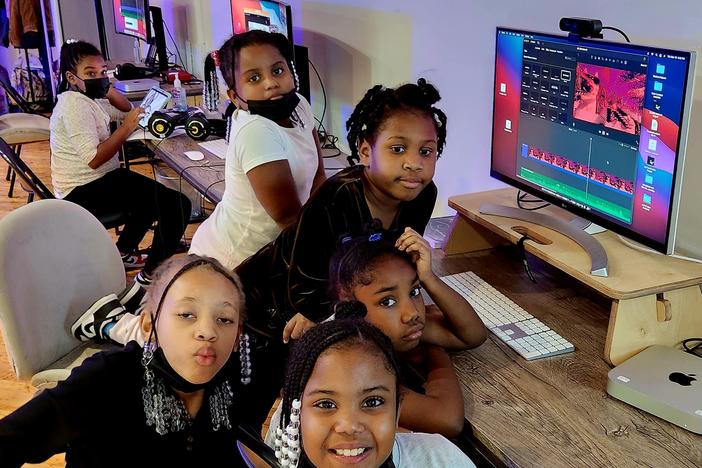Section Branding
Header Content
One of the world's greatest instrument collections is in South Dakota, of all places
Primary Content
The National Music Museum has one of the world's largest and most significant collections of historical instruments. It's located in a place you might not expect — Vermillion, South Dakota.
Transcript
AYESHA RASCOE, HOST:
For 50 years, the National Music Museum has been home to one of the world's most respected collections of instruments. You can track musical history, from the world's oldest cello to one of Elvis' guitars, through its exhibits in Vermillion, S.D. That's right. The National Music Museum is located in a town of just under 12,000 people in the southeast edge of South Dakota. Harvest Public Media's Elizabeth Rembert went to take a look and to listen to some musical history.
ELIZABETH REMBERT, BYLINE: The National Music Museum is located just a few blocks north of Main Street in Vermillion. And on a recent afternoon, a group is congregating in one of the exhibit rooms where there is a gamelan. It's an Indonesian ensemble made up of many percussion instruments. The group ignores any do-not-touch signs and moves the gongs, drums, pots and xylophones that sit across the room. The Vermillion locals aren't here to admire the instruments. They're here to play them.
(SOUNDBITE OF PLAYING GAMELAN)
REMBERT: Faythe Weber plays the peking, which sort of looks like a small xylophone. After practice, she says she learned about gamelan during her time in the Navy. When she heard about a gamelan concert in Vermillion, she thought a traveling group was coming through town.
FAYTHE WEBER: So I came, and I was just stunned to find out that the instruments lived here in South Dakota, you know? (Laughter) We're so lucky.
REMBERT: This gamelan is 1 of more than 14,000 instruments in the museum's collection. It's a treat for professional musicians to perform using some of the instruments here, like the world's oldest cello, built in the mid-1500s in Italy.
(SOUNDBITE OF PLAYING CELLO)
REMBERT: Or a soprano saxophone made by Adolphe Sax, who invented the instrument in the 1840s.
(SOUNDBITE OF PLAYING SAXOPHONE)
REMBERT: Or a grand piano built in 1901 that was once the largest piano ever made.
(SOUNDBITE OF PLAYING PIANO)
REMBERT: Dwight Vaught, the museum's director, knows what you're thinking.
DWIGHT VAUGHT: Why the National Music Museum is in Vermillion, S.D., is probably our most asked question.
REMBERT: He says the story all starts with a man named Arne Larson, who came to town with his collection of 2,500 instruments. It was 1966, and the university in Vermillion had hired Larson as a music professor. The new recruit came with a catch.
VAUGHT: When he was hired by the University of South Dakota, he said, do you have a place that I can store my instruments? And so they offered him a space.
REMBERT: Arne's son would lead the charge to turn the storage space into a museum, which officially opened its doors in 1973. Fifty years later, conservator Darryl Martin says the National Music Museum's collection is top three in the world, stacking up to institutions in Brussels and Paris.
DARRYL MARTIN: So it's the quality of the instruments over a wide range of instrument types. There's a 17th century harpsichord. There's a electric guitar from 20 years ago and everything pretty much in between.
REMBERT: During a tour, Martin walks up to one instrument, a small, wooden keyboard painted in olive green.
MARTIN: This is actually the oldest playable harpsichord in the world.
REMBERT: With a bit of pleading...
MARTIN: I'm a really bad player, but I can...
REMBERT: He demonstrates what the world's oldest harpsichord sounds like.
(SOUNDBITE OF PLAYING HARPSICHORD)
REMBERT: It was made in Naples probably around 1530. Five hundred years later, it's made its way to South Dakota.
(SOUNDBITE OF PLAYING VIOLIN)
REMBERT: But if you can't make the trek to Vermillion, the National Music Museum presents exhibits and concert videos on its website.
For NPR News, I'm Elizabeth Rembert in Vermillion, S.D. Transcript provided by NPR, Copyright NPR.
Bottom Content



